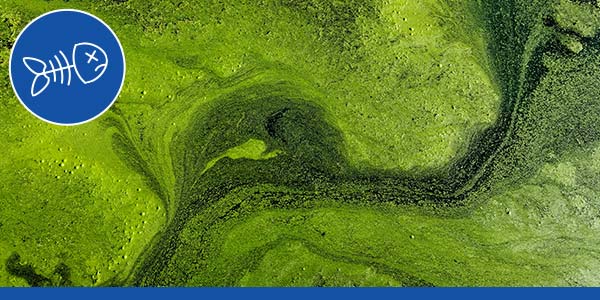Phosphorus in the Environment
Phosphorus is vital within our freshwater ecosystems because it is the limiting nutrient for algae. Eutrophication, or excess nutrients within a body of water, can be harmful due to the potential for an explosion of plant life. This excessive algae growth, called "algal blooms", can deplete oxygen within a water body, causing fish kills. Also some algae can produce toxins that can be harmful to humans and animals.
There are several sources of phosphorus in our aquatic ecosystems. Non-point sources, such as fertilizer runoff, are the most significant contributor. However, municipal and industrial wastewater facilities (point sources) are another significant contributor of phosphorus. These facilities remove organics and solids from wastewater but, more recently, are required to remove nutrients like phosphorus and nitrogen. Phosphorus removal has become an essential priority for facilities discharging to freshwater systems or other at-risk environments. In the US, effluent limits for total phosphorus (TP) are commonly below 1 mg P/L, with critical regions implementing "ultra-low" limits below 0.1 mg P/L.

Excess phosphorus in the environment can cause Harmful Algal Blooms, or HABs.
Learn more about phosphorus regulations, monitoring and removal. Check out our blog post, The Science of Phosphorus.